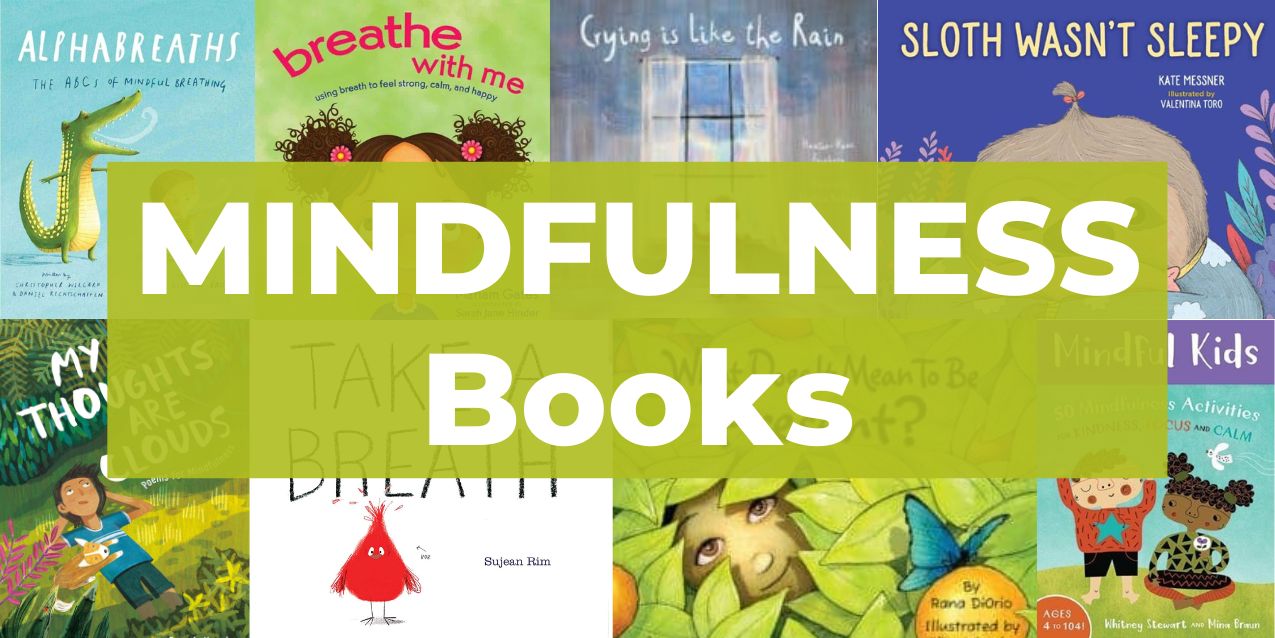If you’re interested in teaching mindfulness for kids, here’s a list of children’s picture books and nonfiction books that will help you introduce the concept of mindfulness to a child.
Mindfulness is being aware of all that is in the present moment — our feelings, the sensations in our bodies, the sounds, sights, and smells of the world around us. Mindfulness is noticing.
What Is Mindfulness for Kids?
Mindfulness is being aware of what’s going on in the present moment. For kids, it helps focus attention, improve self-regulation (impulsivity and decision-making,) build resiliency to stress, and develop a positive mindset.
“With mindfulness, we can preserve our inner joy, so that we can better handle the challenges in our lives. We can create a foundation of freedom, space, and love within ourselves.” – Thich Nhat Hanh
I’ve been working on my own mindfulness for over a decade. It’s a practice, not a destination. Meaning, I’m not “there” yet. If “there” is even possible.
Mindfulness for Kids
Picture Books
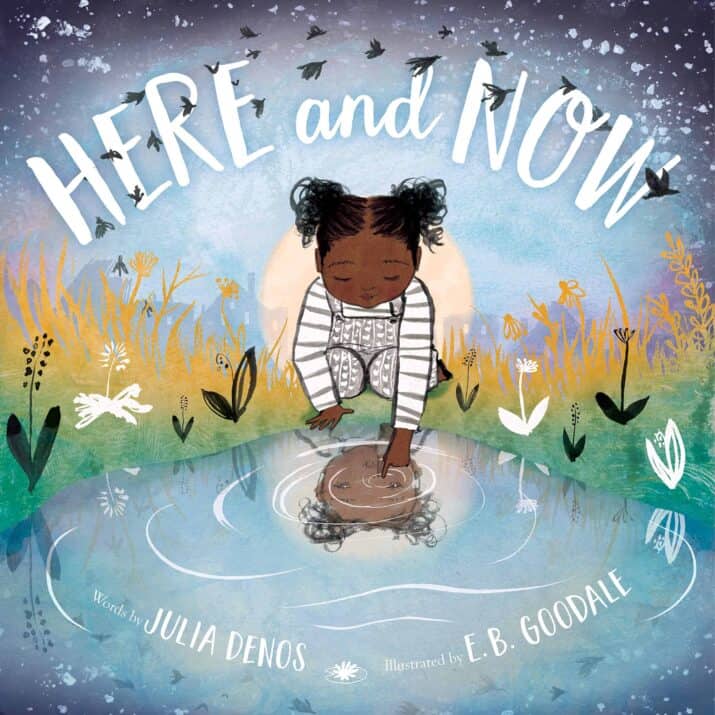
Here and Now by Julia Denos, illustrated by E.B. Goodale
I love this book so much! Readers learn about being present in your body as well as being aware of the world around you. It’s a guided meditation in a picture book! “The book is in your lap, or in your hands, or in someone else’s.” It continues with your entire body then out to the world…
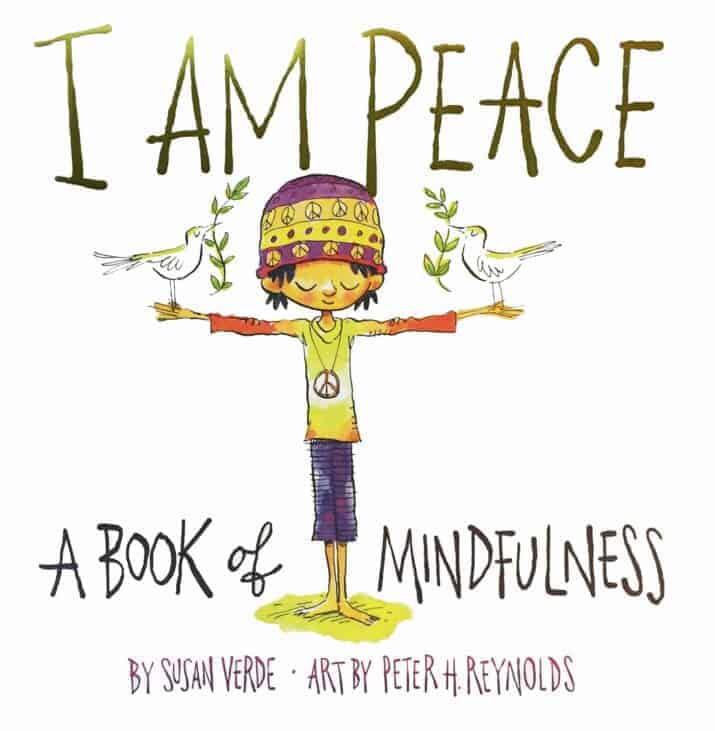
I Am Peace: A Book of Mindfulness by Susan Verde, illustrated by Peter H. Reynolds
This is the goal — to feel the ground, take a deep breath, to be still, to say what you feel, and so on. Reading this book shows kids what mindfulness is. It truly is peace. Reynolds’ whimsical watercolor illustrations make the concepts visually appealing and accessible.
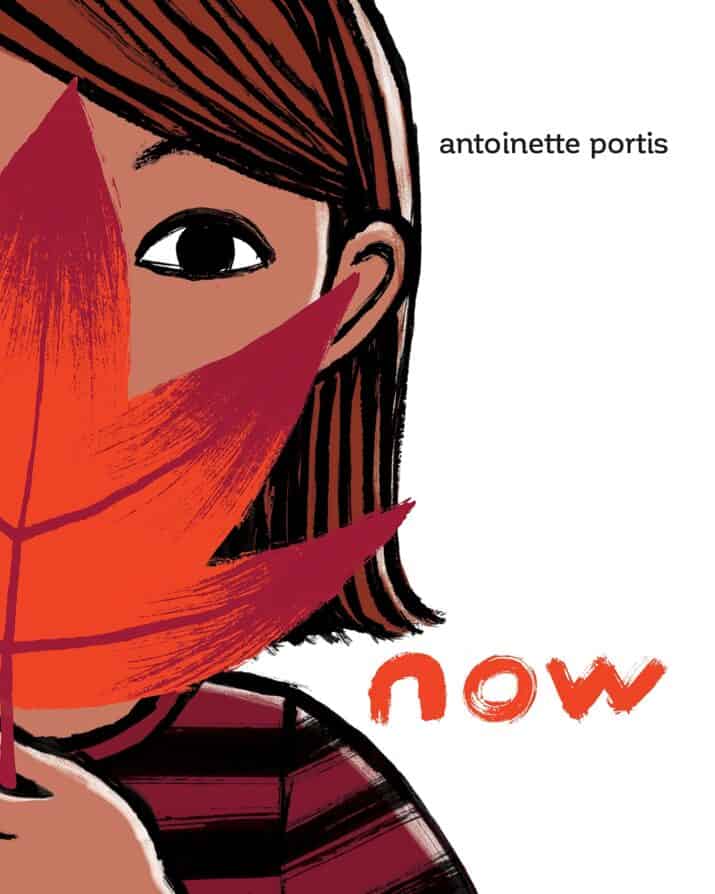
Now by Antoinette Portis
This little girl knows how to live in the present moment. “This is my favorite hole (this one) // because it’s the one I’m digging.” She appreciates the now. “That is my favorite cloud // because it’s the one I am watching.” We can learn a lot from her gratitude for the present moment. “This is my favorite now // because it’s the one I am having // with you.”
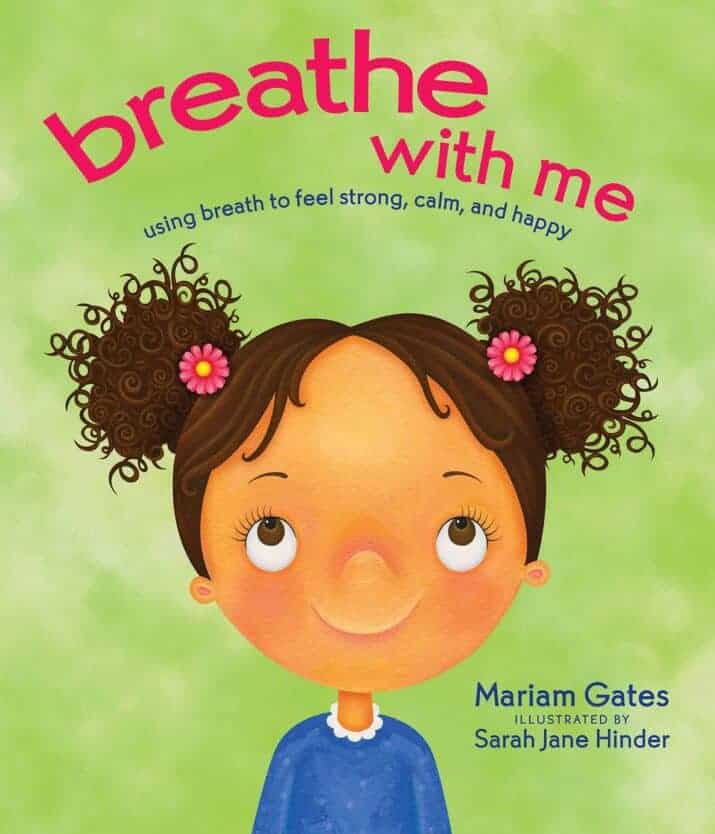
Breathe with Me by Mariam Gates
I love how Gates makes breathing accessible to children with powerful imagery. For example, when you’re sleepy in the morning and can’t wake up — try doing Rainbow Breath. Illustrated with a girl sitting under a rainbow we read about Rainbow Breath:
“Sit up and let your spine grow tall.
Bring your arms out straight to
the sides, palms down.
Inhale and sweep your arms up over your head palm to palm.
Exhale and bring your arms back
straight out to the sides, palms down.
Repeat three times.“
Or when you’re nervous about something new, try Dandelion Breath. (I LOVE the idea of blowing a dandelion, don’t you?) The book has five different ways to think about your breathing in total. And I think they’re all so brilliantly relatable for kids.
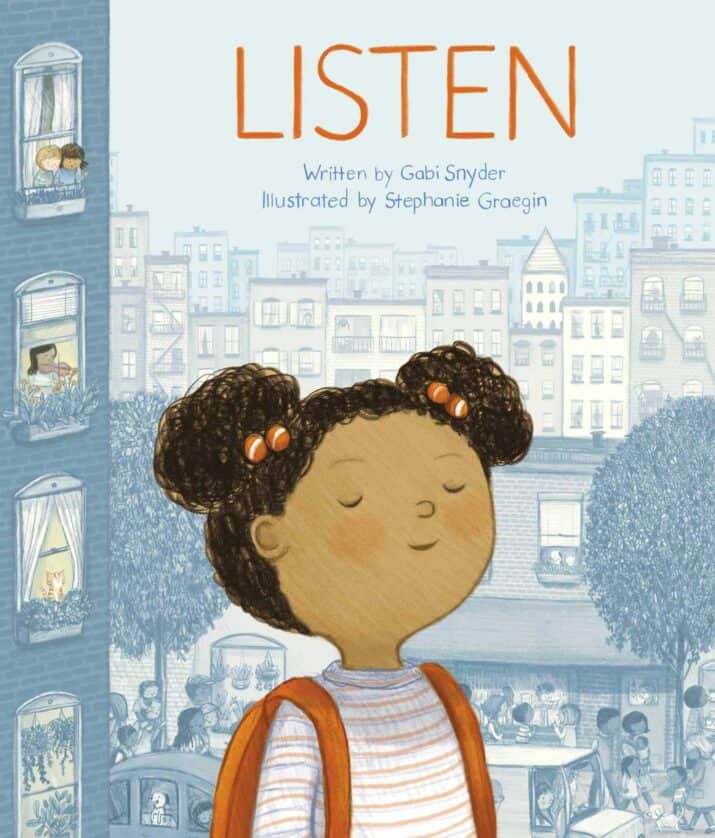
Listen by Gaby Snyder, illustrated by Stephanie Graegin
What if you listened to each sound asks a little girl? Listen with her through her day starting with the noisy street, then at school, into the rain and wind, and all the way until bedtime. “Listen past the crunch of gravel and the scrape of chalk.” She implores you to listen, repeating it frequently throughout the book. She says we must stop and listen to what’s outside and around us as well as what’s inside us, too.
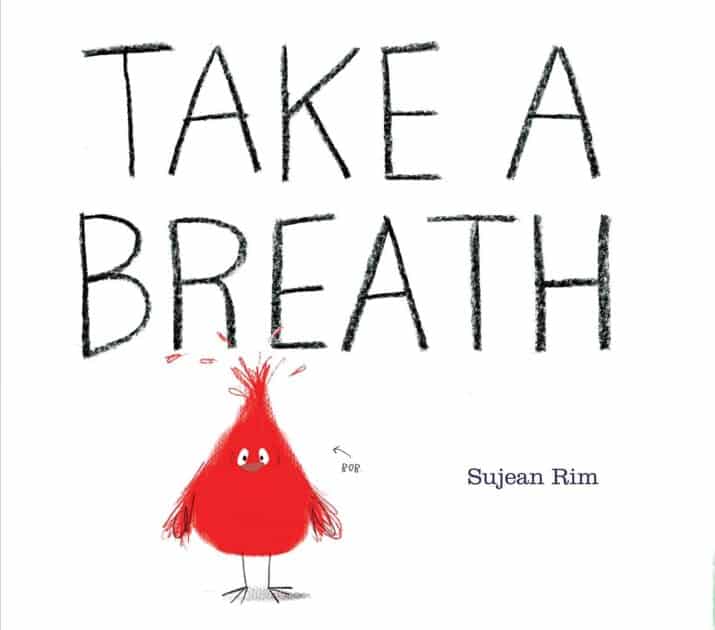
Take a Breath by Sujean Rim
Bob can’t fly quite yet. He tries, and practices and NOTHING happens. He starts freaking out that he’ll never fly!!! Crow helps Bob take a breath. In a funny conversation and practice session, Crow teaches Bob the basics of breathing- noticing your breath, filling your bellies, and all the mindfulness for kids tips. Bob feels so much better…and soon learns to fly!
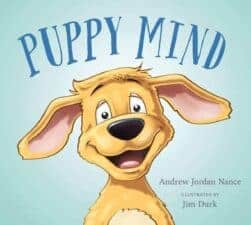 Puppy Mind by Andrew Jorda Nance, illustrated by Jim Durk
Puppy Mind by Andrew Jorda Nance, illustrated by Jim Durk
Zen monks call it a monkey mind but I think kids can really understand puppy mind better. (This also explains the ADHD “squirrel” brain.) Like a puppy who is always wandering off, our brains can do that, too. To keep our brains focused on the present, we can breathe. Lovely illustrations throughout this simple book that gives kids a powerful metaphor.
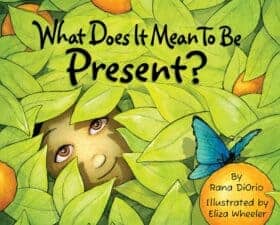
What Does It Mean to Be Present? by Rana DiOrio, illustrated by Eliza Wheeler
Practical examples with real children show you what being present in the moment looks and feels like. Very well done and relatable for kids.
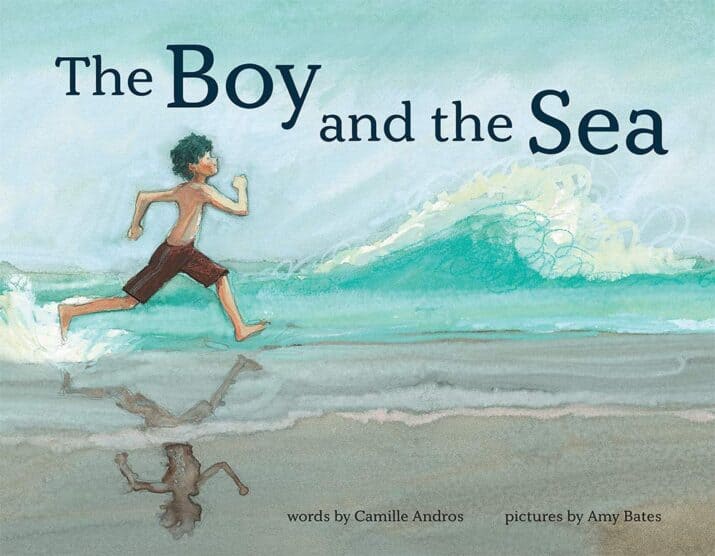
The Boy and the Sea by Camille Andros, illustrated by Amy Bates
Metaphorical and wise, the boy visits the sea; they share much in common. Sometimes the sea is dark and dangerous and so is the boy. When he listens to the sea, he hears the sea say to dream. As the boy grows, he asks more unanswerable questions but the sea has answers and it tells him as an adult to simply be. Repeated sentences give the story a comforting, wave-like structure.
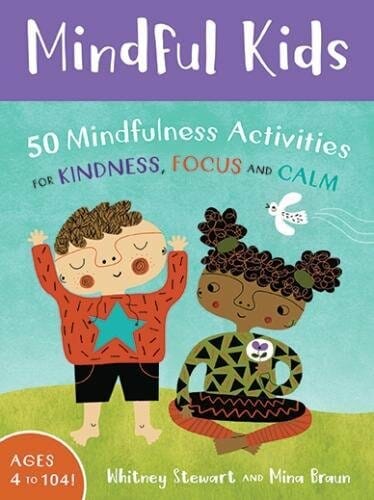
Mindful Kids: 50 Activities for Calm, Focus and Peace by Whitney Stewart and Mina Braun
Beautiful illustrations with diversity (!!) give kids 50 games, visualizations, and exercises to promote mindfulness in 5 categories: feeling grounded, finding calm, improving focus, practicing loving-kindness, and relaxing. Easy step-by-step instructions make these accessible for kids and adults. I can’t wait to try these with my kids.
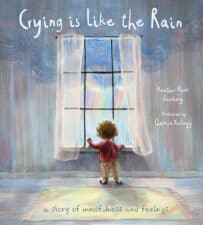
Crying is Like the Rain: A Story of Mindfulness and Feelings by Heather Hawk Feinberg, illustrated by Chamisa Kellogg
This book is spot-on for emotional intelligence — it encourages children to feel all the feelings and shares that crying is temporary just like the rain…It also explains that crying is healing just like the rain that nourishes the earth. “When it’s needed, the rain always comes. And after the rain pours down, the earth feels fresh and new.” This is an essential mindfulness for kids book for any social-emotional curriculum and a very helpful, accurate way for every child to understand sadness and tears.
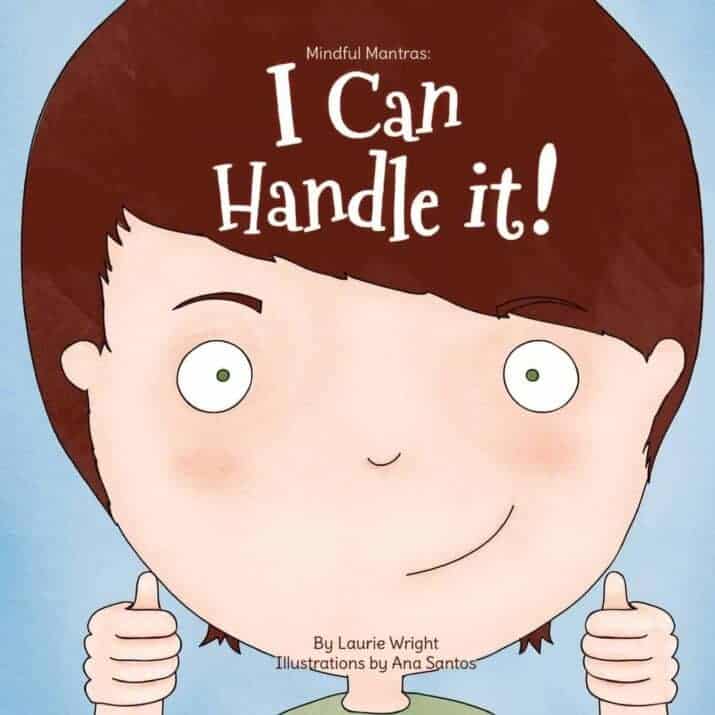
I Can Handle It by Laure Wright
I love this book so much and use the mantras for ME all the time. It’s so great to have this positive affirmation going through my head and my kids’ heads. Things get hard. But I can handle it.
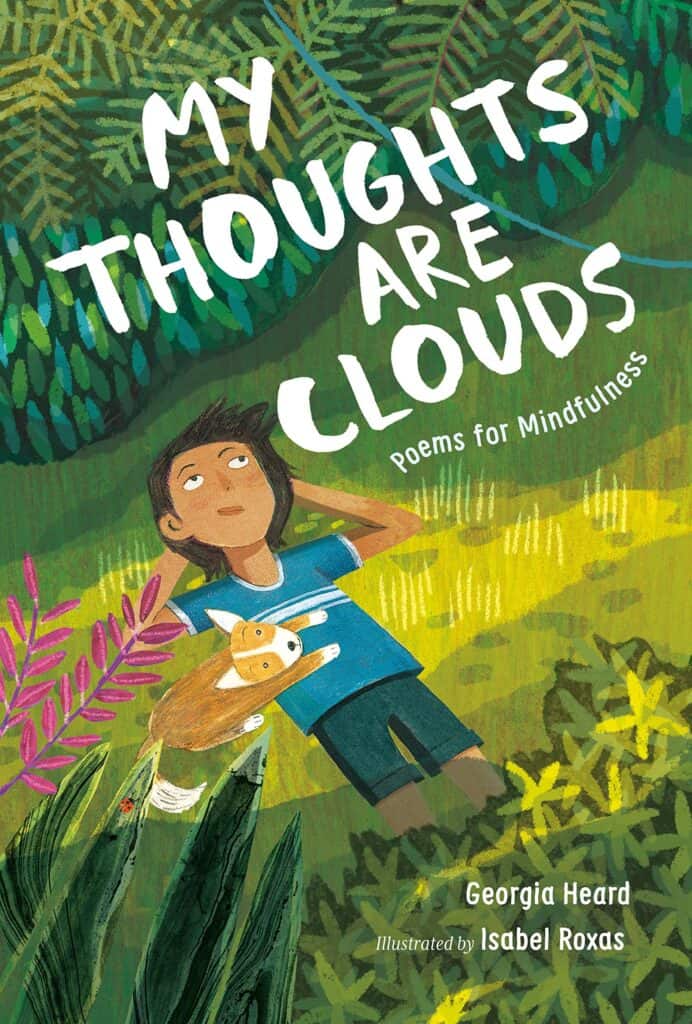 My Thoughts Are Clouds: Poems on Mindfulness by Georgia Heard, illustrated by Isabel Roxas
My Thoughts Are Clouds: Poems on Mindfulness by Georgia Heard, illustrated by Isabel Roxas
Simple poems make the basics of mindfulness for kids understandable, from breathing to understanding thoughts and feelings, and being in the present moment. I love that these poems could be used as short meditations. “See yourself walking in an open field; / let wind offer you its breath. / Become a green leaf / floating lazily down a stream.” But I also love that it reminds us busy adults to slow down, breathe, and notice the world around us.
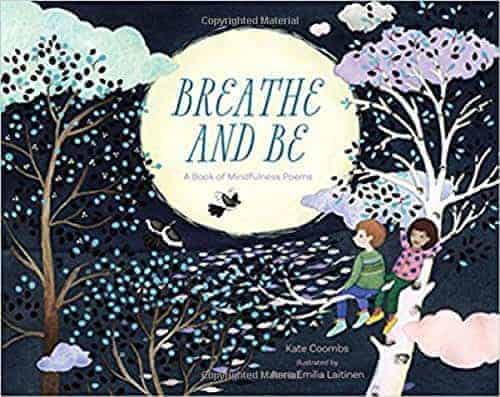
Breathe and Be: A Book of Mindfulness Poems by Kate Coombs, illustrated by Anna Emilia Laitinen
This picture book will help kids be mindful of the present moments! These little poems are great to read one at a time and discuss the meaning with your kids. I’ve taken photos of the pages to send to friends who need a little encouragement.
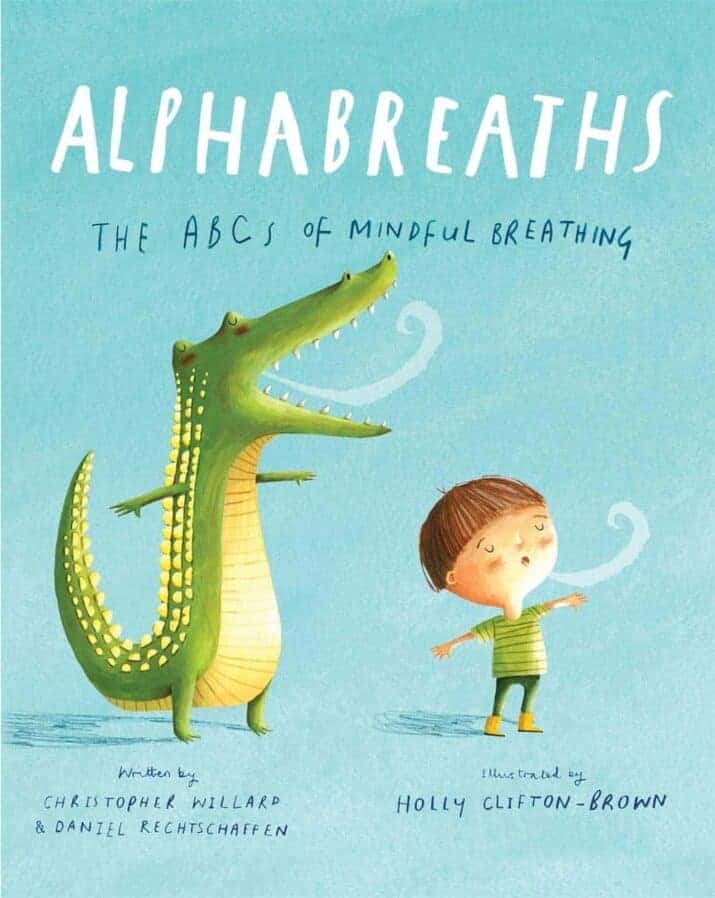
Alphabreaths: The ABCs of Mindful Breathing by Christopher Willard and Daniel Rechtschaffen, illustrated by Holly Clifton-Brown
Learn about breathing deeply with motions and visuals starting with A for Alligator Breath. “Open your arms wide like alligator jaws on the in-breath. Snap them shut on the out-breath.” It continues with every letter of the alphabet like the Butterfly Breath, Cake Breath, Flower Breath, Ninja Breath, and Yawning Breath. We like to do one per day. Read, practice, and assimilate. Discuss which breaths you like the best. A great resource when teaching mindfulness for kids.

Sloth Wasn’t Sleepy by Kate Messner, illustrated by Valentina Toro
Sloth’s mom helps him with strategies to sleep and release the worries. They listen to the trees. “Shush-rush” and feel the wind in their fur…They close their eyes and count to four, the breath out for four. It makes Sloth feel quiet Mama shows Sloth how to imagine her worries and lay it gently on a leaf and set it free. Sloth eventually falls into a peaceful sleep.
 Ten Ways to Hear Snow by Cathy Camper, illustrated by Kenard Pak
Ten Ways to Hear Snow by Cathy Camper, illustrated by Kenard Pak
Lina walks through the snow to her Grandma’s house. As she walks, she notices the sounds of snow. Her boots on the ground sound like “snyak, snyek, snyuk.” People sweeping snow off their cars make a “swish-wish, swish-wish.” She hears the snow with things like mittens, skis, snowballs, shovels, too. When she arrives at her Grandma’s they cook together, eat, and listen to the stillness of the snow. This story’s lovely illustrations combined with the sensory images in the text give readers an immersive experience of this snowy day.
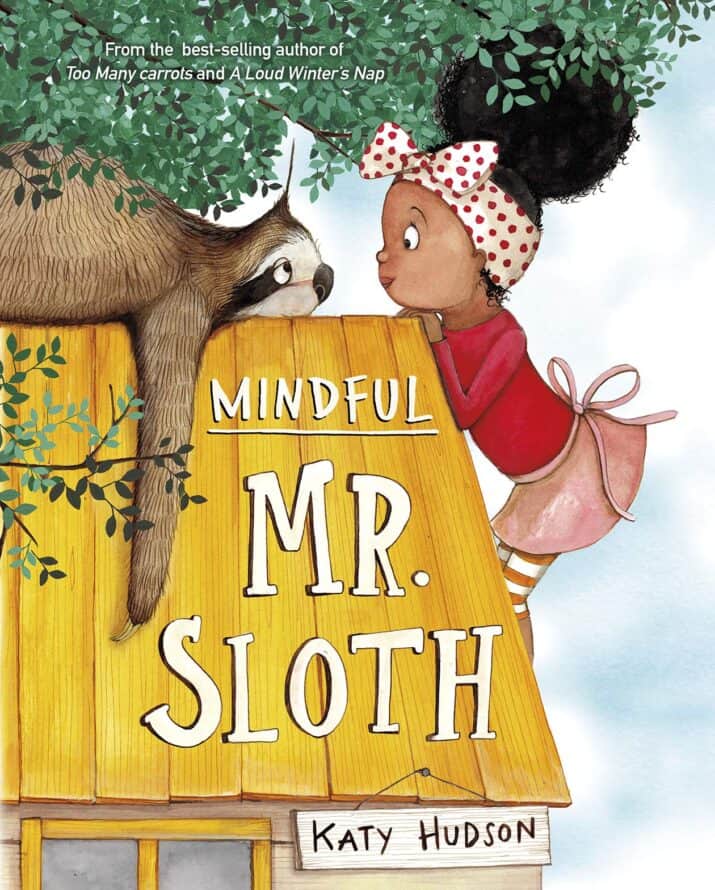
Mindful Mr. Sloth by Katy Hudson
Mr Sloth helps a speedy girl go slow and be still to appreciate the sounds of birds and little butterflies. Now the girl has two speeds — slow and fast.
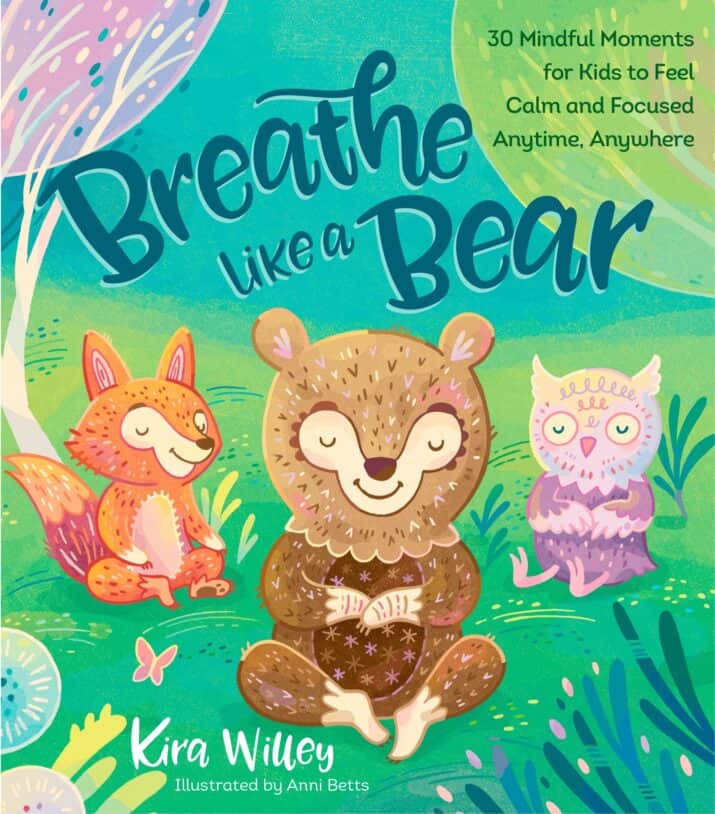
Breathe Like a Bear by Kira Willey, illustrated by Anni Betts
This picture book includes 30 mindful activities for children to encourage calm, focus, energy, relaxation, and imagination, and includes darling illustrations of animals. Learn about hot chocolate breathing, bunny breaths, and kitty cat stretches, among other mindfulness exercises. I think you’ll find these to be helpful mindfulness activities!
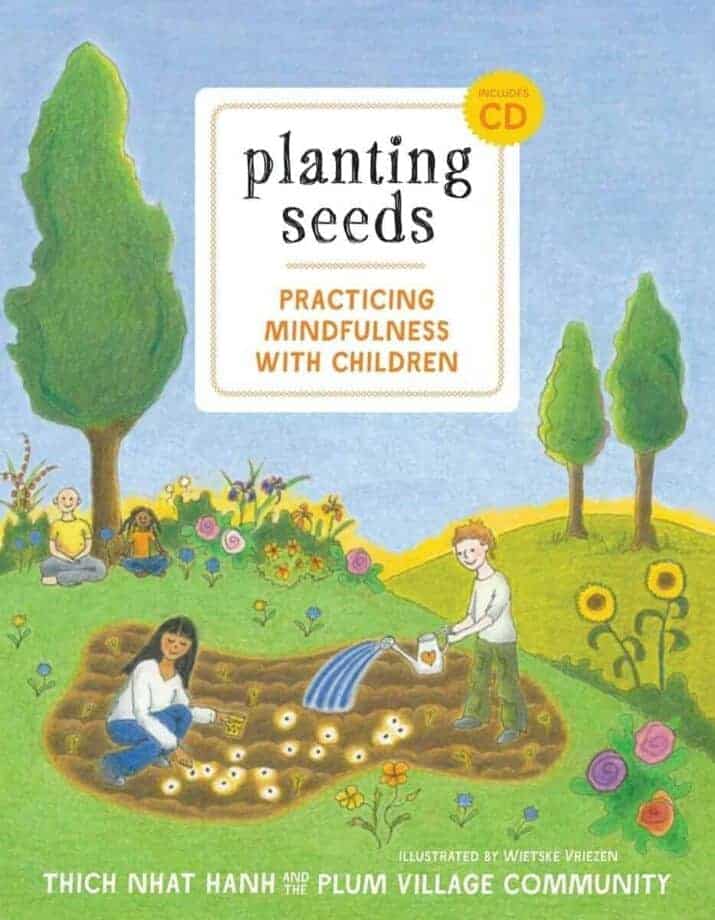
Planting Seeds: Practicing Mindfulness with Children by Thich Nhat Hahn, illustrated by Wietske Vriezen, edited by Chan Chau Nghiem
A teacher friend spent time at Thich Nhat Hahn’s Plum Village teaching mindfulness to the children there. This book is based on the practices used at Plum Village and provides specific activities and dialogue to encourage mindfulness practice.
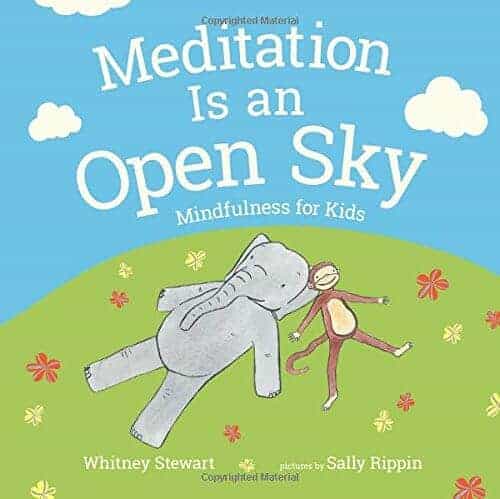
Meditation is an Open Sky: Mindfulness for Kids by Whitney Stewart, illustrated by Sally Rippin
I wish my kids liked this children’s book, but we haven’t found a meditation they connect with as of yet, anyway. It is written directly to the kids, and is not meant for a parent to read aloud to the child. Each of the meditations have a purpose such as focus, security, wisdom, and relaxation.
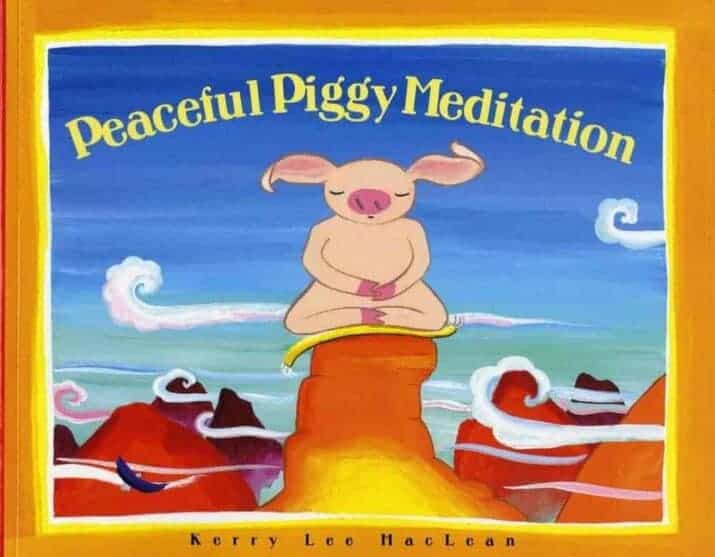
Peaceful Piggy Meditation by Kerry Lee Maclean
The Peaceful Piggy Meditation book includes lovely activities and meditation prompts — for kids and pigs. Children even in elementary school can begin meditation practices to help calm anxiety and to notice feelings big and small. There are many benefits when you teach meditation to children. Even a mindful breath can benefit a child.
Also read: Yoga for Kids: Practice, Books, Videos & Games.
Mindfulness Activities for Kids
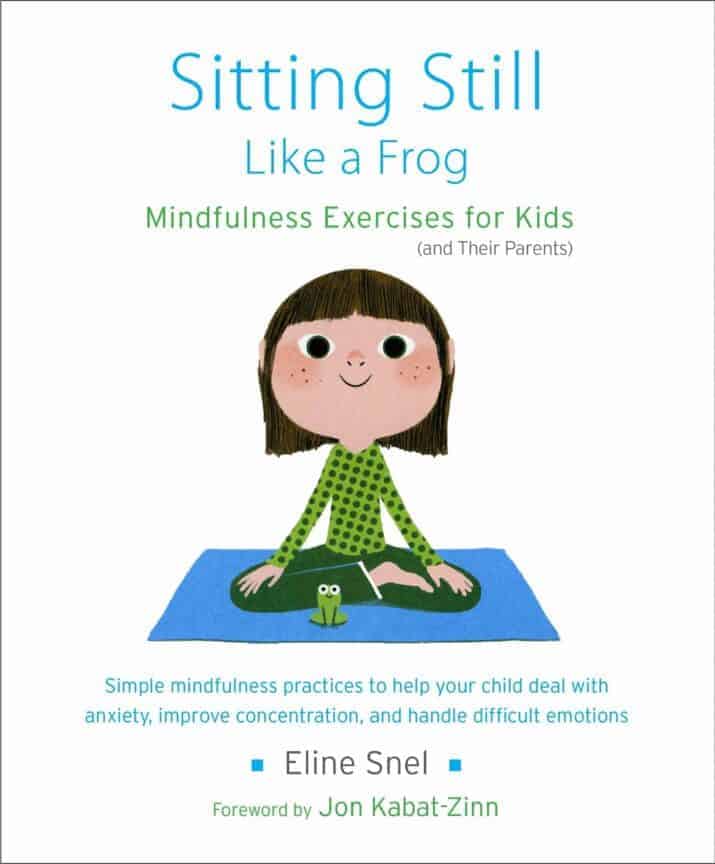
Sitting Still Like a Frog: Mindfulness Exercises for Kids (and their parents) by Eline Snel
I’ve just listen to some of the content on the CD that accompanies this book and think it’s something I’ll buy and try with my kids. See for yourself here. This autio book will help children with mindfulness and meditation as they start paying attention to their breath, body, and peaceful state.
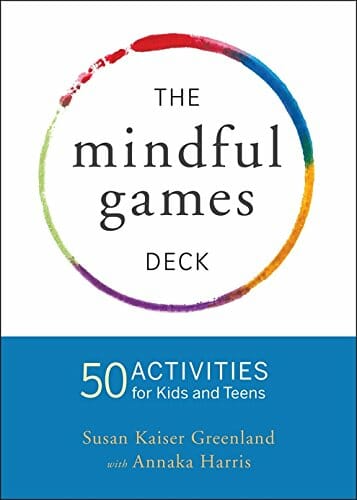
Mindful Games Activity Cards: 55 Fun Ways to Share Mindfulness with Kids and Teens by Susan Kaiser Greenland and Annaka Harris
I’m looking forward to trying these games to practice attention, balance, and compassion as well as breathing!
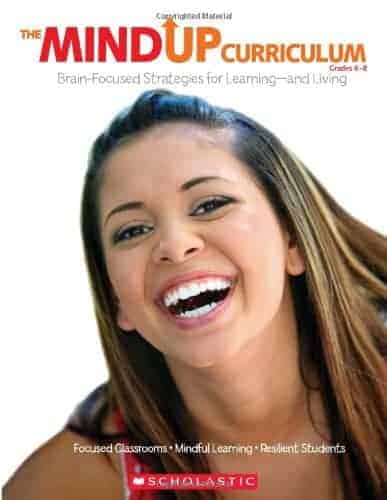
MindUP Curriculum
In this mindfulness for kids curriculum, children learn about their brains like how the sensory input starts at their amygdala, the fight, flight, or freeze response, and then, if all goes well, how the information travels to the prefrontal cortex where the rational brain makes a decision on that input. Then, the curriculum continues on with mindful awareness practices such as sharping each sense, learning to take different perspectives, and being mindful in the world around us. The activities in each lesson not only always explain brain science, but they also provide ideas to engage, explore, and reflect on the learning goal. I’m very impressed with this curriculum!
This summer, I’m using the MindUP curriculum from the Goldie Hawn Foundation to teach my kids the brain science and practice of mindfulness for kids.
First, the kids learn about their brains . . . how the sensory input starts at their amygdala, the fight, flight, or freeze response, and then, if all goes well, how the information travels to the prefrontal cortex where the rational brain makes a decision on that input. If the input gets stuck in the amygdala, the behavior is a reaction and not mindful, or thought out. However, if the input gets to the PFC (prefrontal cortex) then the behavior can be thoughtful, or mindful. Interesting, right?
We made shrinky dinks to illustrate. (You can trace a brain here, and use the MindUP book for labeling if necessary.)
Then, the mindfulness for kids curriculum continues on with mindful awareness practices such as sharping each sense, learning to take different perspectives, and being mindful of the world around us.
The activities in each lesson not only always explain brain science, but they provide ideas to engage, explore, and reflect on the learning goal.
If you’re using this curriculum in a school, there are even more connecting activities for social studies, math, language arts (journal writing and literature included,) and social-emotional learning.
The authors of this curriculum do an amazing job. (And I rarely say that about any curriculum.) Choose the grade level that corresponds to your kids (K-2, 3-5, 6-8) and the content will be similar but designed for that specific age group.
The curriculum leads kids into the practice of mindfulness through the senses and thought awareness.
One thing we do and will continue to do is LABEL EMOTIONS. Noticing what we are feeling is important to our emotional well-being, not just mindfulness for kids. But, more than that, noticing without judgments. See this Pooh Sticks activity for a fun practice of this concept.
Yoga Practice
Another activity we’re doing to help practice mindfulness for kids is a morning yoga practice since it’s very harmonious with body awareness.
Our yoga practice is one of us selecting cards from the Yoga Pretzel cards by Tara Guber and Leah Kalish to do together. One thing that I want to help my kids understand is to be mindful of their bodies.
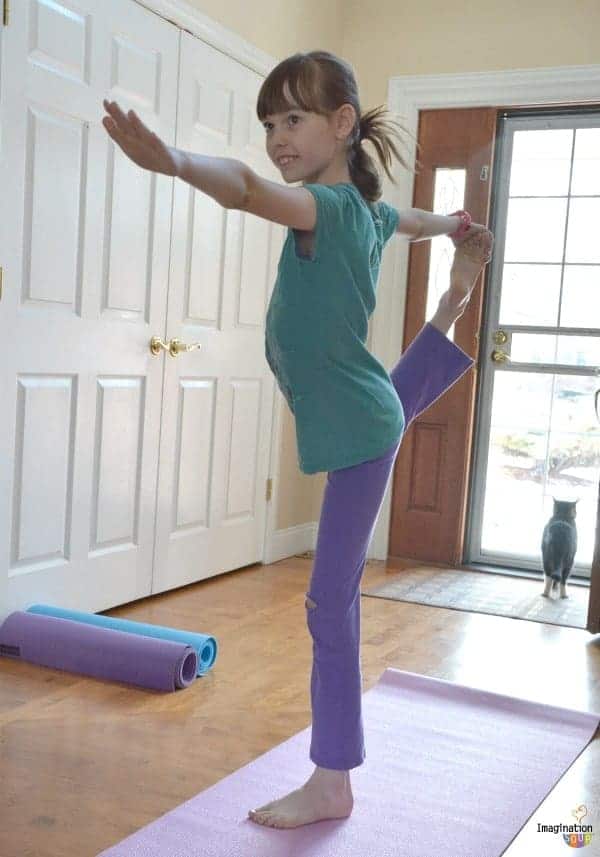
I ask kids, “When you close your eyes what is that feeling like? What pops into your mind when you feel that?” This is called body awareness and somatic experiencing. When kids go into it, they might realize they’ve been clenching their gut, and they can consciously release it.
My kids are sometimes resistant to the mindfulness yoga and meditations. These are the days when they wiggle, won’t close their eyes, and groan. But that’s okay. This is not meant to be forced. It’s an introduction, not a destination or perfect practice.
I accept where they are.
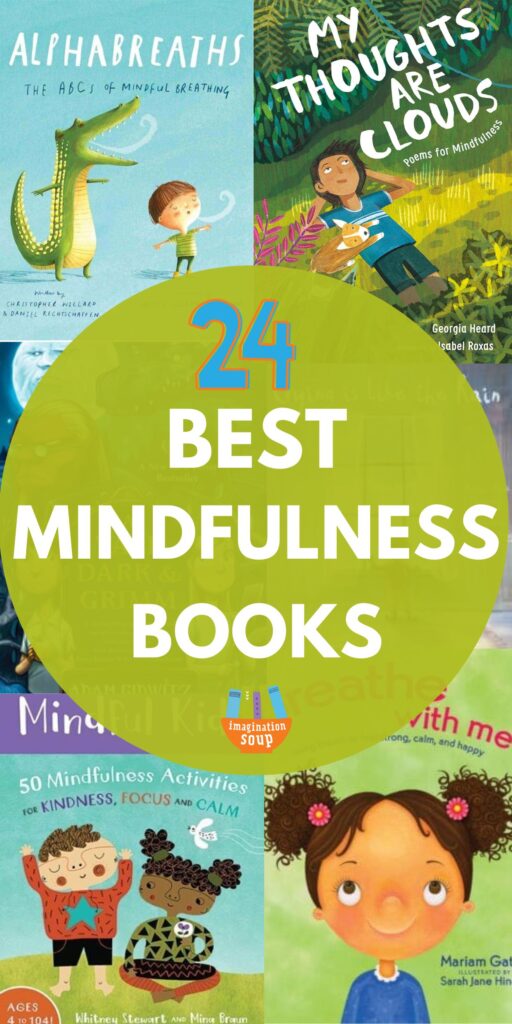
You Might Also Like
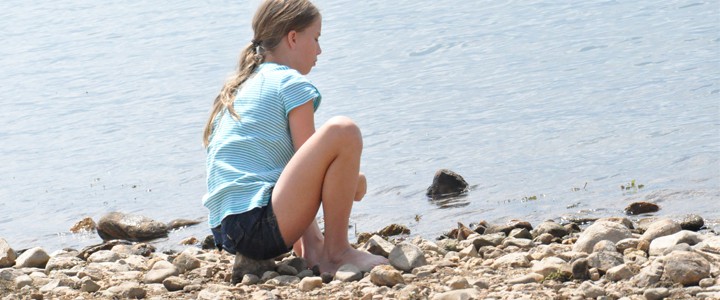
Ways to Help Kids with Anxiety
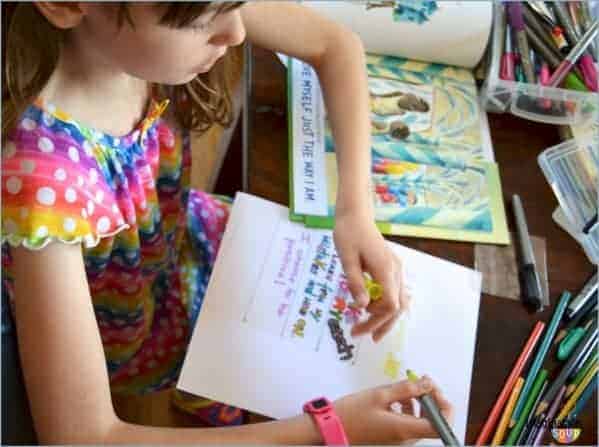
Positive Affirmations for Kids

Teaching Mindfulness to Kids

Wonderful Read Aloud Books for Kids

 PARENTING TIPS
PARENTING TIPS PREGNANCY
PREGNANCY BABY CARE
BABY CARE TODDLERS
TODDLERS TEENS
TEENS HEALTH CARE
HEALTH CARE ACTIVITIES & CRAFTS
ACTIVITIES & CRAFTS